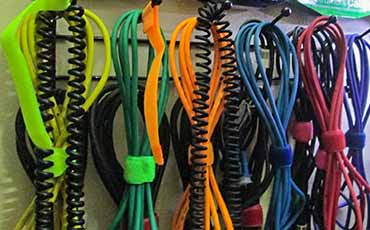Cables let us interconnect microphones, instruments, or any other audio source to our audio interface, amplifier, active monitors etc.
Sometimes buying your first microphone can be a very daunting task and many people will end up with a microphone that is completely unsuitable for their needs. We are trying to brief a few points for you to consider before buying your microphones.
Let’s start by categorizing the types & characteristics of the microphones;
MICROPHONE TYPES
There are 3 main categories of microphones.
1) Condenser Microphones:
Condenser microphones are mostly used in the recording studios and it’s not uncommon to spot them on stage too. They are also called capacitor microphones because they work on the principles of capacitance, voltage & charge in their capsule. So, they require a constant supply of DC power to work. This power is often called ‘Phantom Power’ and is normally supplied via the microphone inputs on a Mixer, Audio Interface or by a separate dedicated phantom power supplying device. Since they are very sensitive to sound, they are the preferred choice for very subtle & clear reproduction of sound. There are 2 varieties among them according the capsule (diaphragm) size. The Large Diaphragm Condensers (LDC) are the common vocal mics & the Small Diaphragm Condensers (LDC, Pencil Mics) are mostly for higher frequency sound sources or as paired mics.
The Large Diaphragm Condensers are the go-to mic for Vocals, Strings, Winds, Brass, Hand Percussions etc. The Small Diaphragm Condensers are well known for their clarity on Hi-Hats, Cymbals, Acoustic Guitars etc. They are relatively expensive, delicate, very susceptible to weather, humidity & smoke.
Condenser microphones with just a single diaphragm will have just one polar pattern which means you can record from only one side of the mic. Sometimes LDSs come with dual diaphragms and can have 3 or more polar patterns such as cardioid, figure of 8, omni etc. which means you can record from the front, back or around the microphone. These days you can find condenser microphones that has a USB connection to plug-in directly to a computer or laptop without needing external phantom power.
Some famous Large Diaphragm Condensers are: Rode NT1, Audio Technica AT-4050, AKG C214, AKG C414, Neumann TLM 170 R, Telefunken U-47, Neumann U87 etc.
Some famous Small Diaphragm Condensers are: Shure SM81, AKG C451 B, Rode NT55, Audio-Technica AT4022, Audix ADX51, Lewitt LCT 340 etc.
2) Dynamic Microphones:
Dynamic microphones are the most common type that are found on almost any stage/studio. They are technically moving-coil microphones and generate the sound-signal via electromagnetic induction. Since the coil inside the mic requires some powerful sound to make it vibrate, the dynamic microphones are the best choice for very loud & heavy sources like Kick Drum, Snare Drum, Toms, Guitar & Bass Amps, Very Loud Vocals, Percussions etc. They are an excellent choice for live situations or for stage as they capture a singer’s voice without getting too much bleed from the other instruments on stage. Dynamic Mics are not very suitable for subtle sound sources or instruments. They are relatively cheaper, sturdy, weather resistant and does not require any Phantom Power to work.
Some famous dynamic microphones are: Shure SM57, Shure SM58, Shure SM7B, Electro-Voice RE20, Sennheiser MD421 II, Sennheiser MD 441U etc.
3) Ribbon Microphones:
Ribbon microphones are not very common on stage but they are very popular in the studios. These type of microphones uses a thin electrically conductive aluminum ribbon placed between the poles of a magnet to produce a voltage signal by electromagnetic induction. Ribbon microphones are typically bidirectional, meaning that they pick up sounds equally well from either side of the microphone. They are extremely versatile and have a very pleasing flat response, suitable for a lot of acoustic instruments. They will give you the most accurate sound reproduction when compared with dynamic and condenser mics. But it’s a good idea not to keep them so close to a very loud sound source. Ribbon microphones are generally very versatile and can be used for recording anything, with a little caution. They are very delicate and more expensive. Care should be also taken when ribbon microphones are used alongside condenser microphones as an accidental phantom power supply to a Ribbon Mic can potentially damage it.
Some famous ribbon microphones are: Royer R-101, Avantone C-14, MXL R77, Audio Technica AT4081, Beyerdynamic M160, Shure KSM313/NE, Royer SF-12 etc.
To learn more about Microphones, visit: eHome Recording Studio


